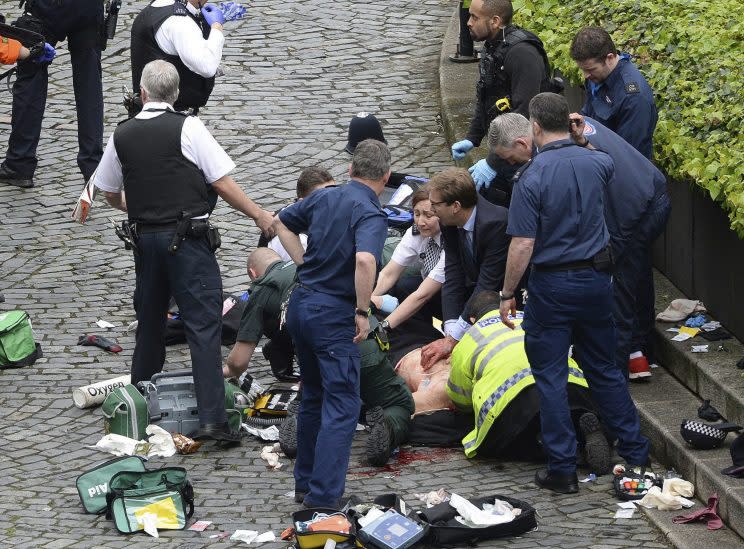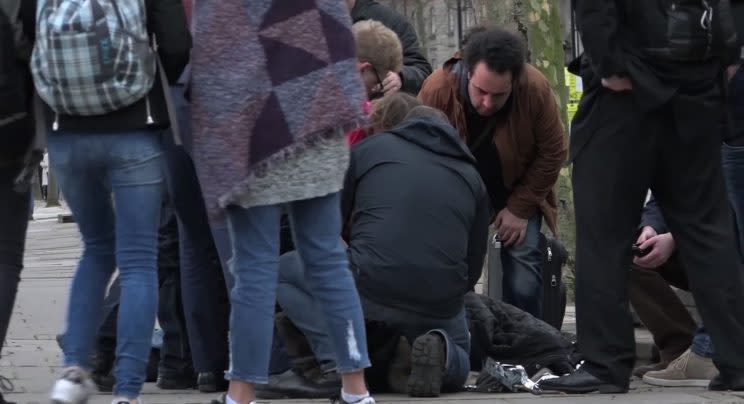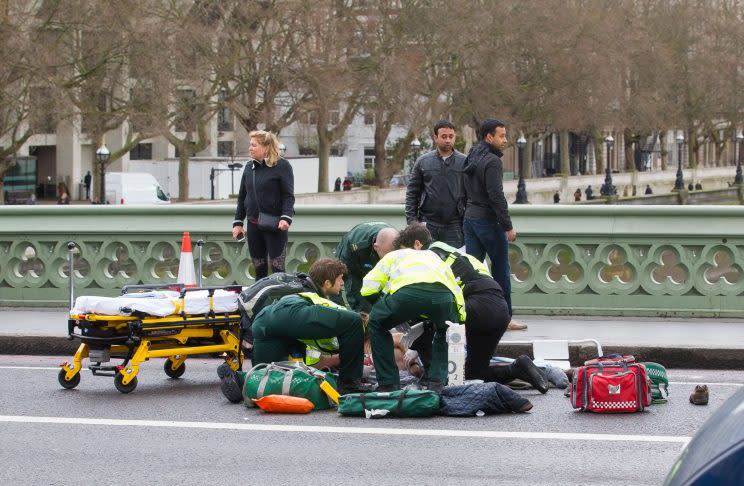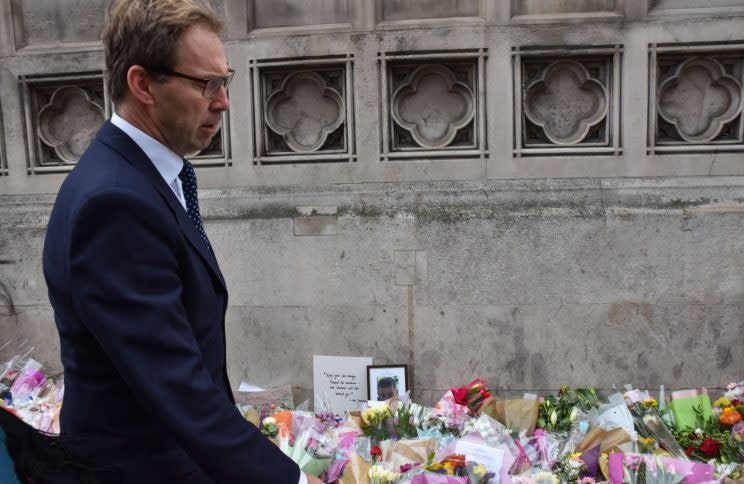How you should carry out first aid if you see someone in trouble

It was one of the enduring themes of the aftermath of the Westminster Bridge terror attack.
Strangers and passers-by rushing to the injured to try and help and, in some cases, administer first aid.
Images showed people selflessly rushing to help those hurt in the attack.
In the most prominent case, MP Tobias Ellwood gave cardiopulmonary resuscitation (CPR) to PC Keith Palmer as he tried to save the life of the slain policeman.
But what should you do if try to give first aid to someone who has been injured?
MORE: Thousands gather for London terror attack vigil
MORE: “Final” photo of PC Keith Palmer
NHS Choices advises would-be first aiders to carry out several important steps if you discover somebody who is injured.

What to do
First, it says people should check the situation is safe and phone for an ambulance. Then if first aid is still required, this is what you should do.
Recovery position
If someone is unconscious but breathing, and has no other injuries, they should be placed in the recovery position until help arrives.
The NHS advises that if the person is on their back you should kneel at their side, then:
Place the arm nearest you at a right angle to the body, with their hand upwards, towards the head
Tuck the other hand under the side of their head, so their hand is touching their cheek.
Bend the knee farthest from you to a right angle.
Carefully roll the person onto their side.
Open the victim’s airway by gently tilting their head back and lifting their chin.
Check nothing is blocking their airway.
Stay with the person until help arrives.

How to give CPR
Place the heel of your hand on the breastbone at the centre of the person’s chest.
Then place your other hand on top of your first hand and interlock your fingers.
Position yourself with your shoulders above your hands.
Using your body weight (not just your arms), press straight down by 5-6cm on their chest.
Keeping your hands on their chest, release the compression and allow the chest to return to its original position.
Repeat these compressions at a rate of 100 to 120 times per minute until an ambulance arrives or you become exhausted.

CPR with rescue breaths
Place the heel of your hand on the centre of the person’s chest, then place the other hand on top and press down by 5-6cm (2-2.5 inches) at a steady rate of 100 to 120 compressions per minute
It adds that after every 30 chest compressions, give two rescue breaths.

 Yahoo News
Yahoo News 


